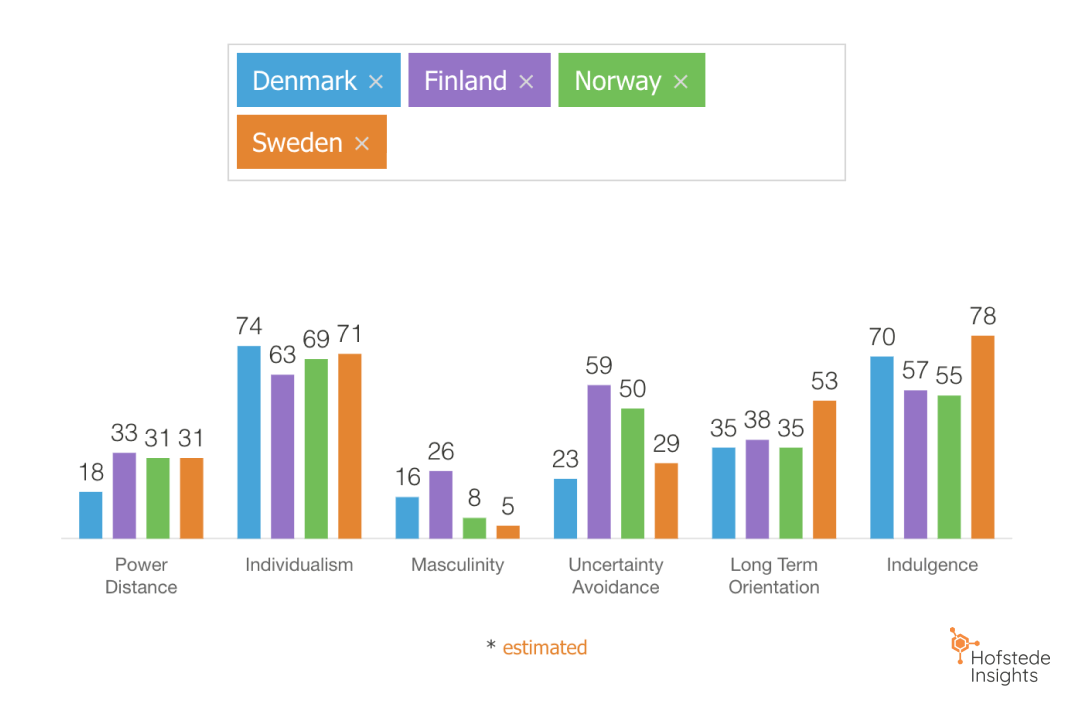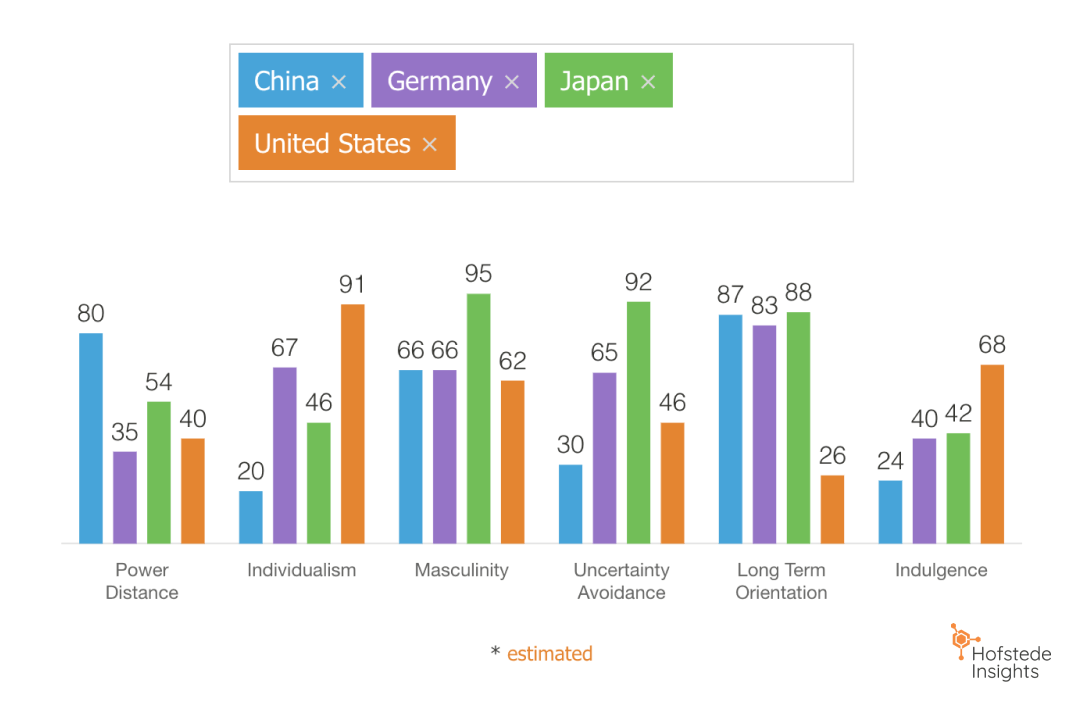Work culture
Discover differences between positive vs. toxic work cultures. Examples of work culture in different companies and countries. Tips on how to improve work culture.

After reading this guide, you will have a better understanding of the various types of work cultures, how to implement the right type of work culture for your organization, and the benefits of doing so.
Discover:
- What is work culture?
- What is a positive work culture?
- Benefits of a positive work culture
- What is a toxic work culture?
- Real-world examples of work culture
- Does work culture differ by country?
- How to create a positive work culture
What is work culture?
The physical environment of an organization also influences the work culture. It is unique to each business and is shaped by interactions, attitudes, beliefs, traditions, and values.
We spend a significant amount of time at work, so it is only natural that the environment we spend so much time in would have an important impact on us.
Work culture is not a fixed thing and evolves based on the behaviors of people working at an organization.
Workplace culture is a subset of organizational culture, which has four main types: clan, adhocracy, hierarchy, and market.
What is a positive work culture?
Simply put, a positive work culture is one that prioritizes the well-being of employees, offers support at all levels within the organization, and has policies in place that encourage respect, trust, empathy, and support.
A 2011 study by Cameron et al. found that a positive work culture contains six elements:
- Treating colleagues as friends, caring for them, and being interested in their wellbeing.
- Supporting colleagues and offering compassion and kindness in times of need.
- Forgiving mistakes and not assigning blame.
- Working to inspire each other.
- Finding and emphasizing meaningful aspects of the work.
- Prioritizing trust, respect, gratitude, and integrity.

Build a learning culture: a practical workbook for your organization
Upgrade your organization’s learning culture with clear, actionable strategies to address the challenges.
Download workbookBenefits of a positive work culture
There are a multitude of studies that demonstrate that a positive work culture directly leads to better health for employees, reduces turnover, increases loyalty, and promotes better job performance.
Let’s explore exactly how a positive work culture can benefit an organization:
1. Improved employee health
Studies have shown that positive social connections at work are crucial for the health of employees.
When a person experiences positive social connections within their workplace, they tend to have fewer illnesses, quicker recovery from injuries, are less likely to experience depression, better cognitive functions, and overall, better job performance.
2. Reduced turnover
In 2014, research by Dutton et al. in the University of Michigan’s CompassionLab underscored the importance of empathy in the workplace: “Most empirical research examines how compassion benefits sufferers. Compassion heals, allowing people to recover physically from illness and bodily harm and psychologically from grief. Also, evidence suggests that compassion in the workplace calls up positive emotions (e.g., gratitude), reduces anxiety, and increases a sufferer’s attachment and commitment to the organization.”
By consistently demonstrating empathy, leaders are able to reduce turnover and facilitate employee commitment.
Read: Leadership and Executive onboarding: 5-step plan
3. Increased loyalty and reduced negative behaviors
Research on leadership shows that when leaders go out of their way to help, especially when they don’t have to, their employees respond by becoming more dedicated, loyal, and self-sacrificing themselves.
A manager who is willing to go above and beyond can create a strong dynamic with their team, produce better results for the organization’s goals and improve the wellbeing of the people they lead.
Not only does this behavior increase loyalty, but studies show that it increases positive behavior in employees; such as picking up shifts to help teammates, seeking increased responsibility, and taking extra care to represent the company in a positive manner.
Helpful behavior demonstrated by managers can also decrease negative behavior; such as, acting rudely towards other employees and dismissing requests from supervisors, or neglecting their work.
4. Better performance outcomes
Research on the inconsistency of organizational conditions shows that when employees trust their leader and feel that their job is secure, they are more likely to experiment, and cultivate innovation.
When an employee feels that they will be penalized for failing or even asking for help, they are going to rigidly stick to prescribed behaviors, even if those behaviors are out of date, not the right fit for the project, or inefficient.
Nazli Mohammed’s Trust in the Workplace study shines a light on the strong connection between trust and wellbeing: “Compared with people at low-trust companies, people at high-trust companies report 74% less stress, 106% more energy at work, 50% higher productivity, 13% fewer sick days, 76% more engagement, 29% more satisfaction with their lives, and 40% less burnout.”
What is a toxic work culture?
A toxic work culture is one that contains dysfunctional behavior, drama, infighting, poor communication, power struggles, and low morale. It also does not prioritize employee well-being through actions and policies.
This can be present in an organization in a number of ways, with each toxic workplace having its own set of unique problems, but there are common issues that toxic workplaces may experience:
1. Low morale
This isn’t the Monday morning blues, but rather a chronic company-wide lack of enthusiasm.
Studies show that negativity is contagious and that a negative environment can cause high performers to leave their organization at a rate 13 times higher than other employees.
2. Lack of clarity
Toxic workplaces can demonstrate a lack of clarity regarding roles, responsibilities, chain of command, and hierarchy.
This might be because of poor communication, power struggles, or dysfunctional management.
The end result is a workforce that doesn’t know what they are supposed to be doing, how to do it, or who to turn to for help.
3. Interpersonal drama
Gossip, cliques, passive-aggression, and workplace bullying all fall under the drama umbrella.
This certainly isn’t limited to non-leadership employees either, as power struggles between higher-level managers and their respective supporters can be the cause of interdepartmental drama in many toxic organizations.
4. Fear of failure
As stated above in the section covering creating a culture of trust and safety, fearful employees have worse health outcomes and will have poor job performance compared to employees who feel secure.
A workplace is toxic when an employee believes or knows that they will be penalized for failure.
5. High employee turnover
Who can blame them? A toxic work environment is bad for an employee’s health.
In 2019, SHRM commissioned a report on toxic workplaces that showed that 1 in 5 people had left their job in the previous 5 years due to poor workplace culture.

Build a learning culture: a practical workbook for your organization
Upgrade your organization’s learning culture with clear, actionable strategies to address the challenges.
Download workbookReal-world examples of work culture
Amazon
With a high-pressure environment that they call ‘Purposeful Darwinism,’ the corporate culture at Amazon pushes employees to consistently deliver. They prefer to divide groups into smaller teams and encourage collaborative decision-making with a focus on innovation.
Amazon focuses on the customer within every department and product and strives to maintain the push to excellence that drove their success as a startup.
The high-pressure environment isn’t ideal for everyone, and some employees report that the lack of work-life balance led to their departure.
Amazon warehouse employees have reported long hours, low pay, unreasonable working standards, and burnout, especially during the COVID-19 pandemic.
Google has consistently won awards for best company culture. They encourage their employees to work when and where they want, giving them the freedom to be creative in their workflow.
As a company built on innovation, they encourage experimentation and ask employees to keep the user central at all times. They have clear core values and encourage transparent communication at all levels within the company.
Employee development is also a priority, allowing for greater mobility within the company and lower turnover.
Google has struggled with reports about the lack of diversity within the company, showcasing the need to focus on DEI initiatives.
Tesla
A high-pressure environment, Tesla is laser-focused on innovation. They are consistently encouraging employees to experiment, and are not afraid to let people work outside of their comfort zone.
Small teams and a dedication to personal responsibility are part of their individualistic culture, with the expectation set of achieving great results no matter.
However, Tesla has frequently found itself in the news because of ex-employees alleging long hours, unsafe working conditions, and racism.
Microsoft
Microsoft has been working for the last six years to swing their culture from a fixed mindset to a growth mindset, encouraging growth, experimentation, and even failure as a key part of each job at Microsoft.
With a focus on collaboration, Microsoft asks employees to be customer-obsessed and provides ample opportunities for learning and development.
They have a strong focus on diversity and inclusion within the company, aiming to create a workforce that reflects the diversity of the world’s population.
Their core values highlight empathy, collaboration and prioritize work-life balance.
In 2021, Kathleen Hogan, Head of HR, won HR Executive of the Year in recognition of her work in revitalizing the culture at Microsoft.
Does work culture differ by country?
Yes, it does. Just as the social culture in each country is different, work culture will have distinctive aspects by country.
Of course, each organization is unique, and you might find that a Japanese company has a culture that is more similar to America, or a French company has a distinctly German culture. However, as a general guide, let’s take a look at some of the differences in work culture between some countries based on Hofstede’s Cultural Dimensions research.
Scandinavia
In Scandinavian countries, employee wellbeing is prioritized.
With a shorter workweek (on average, 36 hours) and longer vacations (5 weeks of paid leave is common), Scandinavian workers are encouraged to create a good work-life balance.
Organizations often create a flat management structure and encourage autonomy and independent decision-making from employees.

Source: Hofstede Insights.
United States of America
American organizations tend to place a high priority on results, achievement and are highly goal-oriented.
The US is a highly individualistic and competitive culture where results, especially in the short term, are highly valued. Overtime is often expected, and time off is not prioritized.
There is higher uncertainty within jobs and fewer employee protections. This can produce a highly competitive environment with less collaboration.
Germany
With a more formal work culture, German organizations tend to use formal titles, professional attire and can be somewhat rigid when it comes to punctuality.
While there is less workplace socializing, there is also no expectation of working overtime either; you are expected to come in, do your job, and then leave when the clock strikes 5 pm. This creates a work-life balance that is supplemented by generous holiday leave.
German organizations tend to place a high priority on teamwork, with many subject matter experts working together to solve problems.
Japan
In Japan, the order is highly valued. The company culture tends to be more cooperative, with a focus on respect and following the rules.
Interdependence is more common than independence, and work is often done in teams, with a higher focus on process than results.
The rules of etiquette and hierarchy are closely followed, and there is an expectation that employees will socialize outside of work, which often involves alcohol.
Japan and the United States have similar expectations of long work hours with fewer vacations.
China
Chinese organizations tend to have a rigid hierarchy and value collectivism rather than individualism.
Respect and etiquette is key, especially when it comes to interacting with superiors.
Long hours are the norm, although China has recently taken steps to move away from the 996 work culture (working 9 am to 9 pm, 6 days a week).
Employees are expected to socialize outside of work hours, and personal and professional lives are often intertwined.

Source: Hofstede Insights.
How to create a positive work culture
1. Create or formalize the vision of your organization
The main vision or central mission of your company can help you unite people. It can also help you employ people who have similar beliefs and create teams with the same values.
Of course, not every company will have an inspiring cause and not everybody you hire will believe in it.
But by having an explicitly stated vision you can transmit a clear picture of what you are doing and why you exist, which can help you attract the right people to build a shared sense of purpose.
2. Be clear about company values
This is crucial. Your organization should be absolutely transparent about what its values are.
Not only that, it is important to demonstrate how the company and leadership are living by those values on a daily basis.
3. Employ people who fit your culture
If you hire a high performer who does not fit your cultural expectations, they will negatively affect it. The same goes for current employees.
In cases where an employee is not behaving in accordance with your organization’s culture, leadership should work with them to try and adjust their attitude and help them change it. But if it doesn’t work, consider letting them go.
4. Encourage trust, empathy, and support
Leaders can promote trust through their actions.
By being consistent, open to feedback, showing appreciation, participating in active listening, trusting employees to make the right decisions, and being honest (but fair), managers can create a culture of trust and reap the benefits.
Empathy is all about connecting with those around you. Provide your employees with tips on empathetic behavior, such as:
- Noticing how people are doing
- Being an active listener
- Asking thoughtful questions
- Avoiding making any assumptions or judgments
- Recognizing someone’s feelings, even if you don’t necessarily understand them
Many organizations have found specific empathy training to be valuable, since this is a learned skill and not a fixed trait, so making it a priority in your company culture will be reflected in your work culture.
5. Create dedicated spaces for socialization
In her 2018 study Fostering Social Connection in the Workplace, Julianne Holt-Lunstad recommends that employers create spaces dedicated to socialization and implement strategies to foster high-quality interactions.
Spaces for socialization can include ping pong tables, open-plan offices, or employee social hours. However, this kind of unstructured space may not necessarily lead to meaningful interactions. That is why structured strategies can be more effective.
Structured strategies can include leadership training, connecting employees in mentor-mentee relationships, and encouraging relationship diversity in both culture and organizational roles.
However, these initiatives should not take place outside of work hours. Having a work-life balance is important, as is fostering employees’ personal social connections.
6. Demonstrate commitment to supporting employees
Those in leadership positions should regularly show their commitment to their team.
This can be through support with upskilling or moving into higher positions, being flexible during times of personal strife, or even decreasing their salary to save jobs.
When employees can see their leader’s dedication to them, their loyalty will in turn increase and create a better work culture.
7. Encourage communication
From a simple check-in message on a Monday to yearly reviews, employees can perform better when they have regular, clear communication with their managers.
Create an environment where communication is valued, and show your employees through your actions that if they come to you with a problem, you will do your best to help solve it.
It is important to balance this with empowering employees to solve problems and make decisions on their own.
By creating a non-judgemental, supportive, and solution-oriented environment you will find that your team will soon pick up those same characteristics.
8. Have clearly defined policies on sick days, including mental health days
Your organization should encourage employees to take care of themselves.
Create clearly written policies around the importance of taking sick days when necessary, and make sure to include mental health care as a valid reason to use them.
9. Provide support for physical and mental health
An organization can work to make healthy activities more accessible for their employees through partnerships with gyms or sports equipment stores, creating internal sports activities, or offering to pay entry fees to sporting events like marathons.
In-house vaccination drives can be organized to provide flu shots. Some companies work with mental health providers to offer discounted rates for services.
10. Have clear lines of communication and defined processes
Your organization should create documents, accessible to all employees, that outline the process for dispute mediation and HR complaints, as well as information about benefits, compensation, vacations, relocation, and bonuses.
All of these common topics should have a clear explanation, and employees should know who to turn to if they have an issue or question.
11. Provide training and personal development
Personal development should be prioritized for employees.
The organization should provide continuous training for employees not only in hard skills directly related to their roles but also in soft skills like leadership, communication, problem-solving, and creativity.
12. Set a good example through leadership
Leadership, management, and HR should show their commitment to the organization and its values through their actions and decisions. In essence, this is leading by example.
Employees are quick to notice when leadership does not practice what they preach, and they are less likely to follow these values themselves if they do not see their leadership following them.

Build a learning culture: a practical workbook for your organization
Upgrade your organization’s learning culture with clear, actionable strategies to address the challenges.
Download workbook



